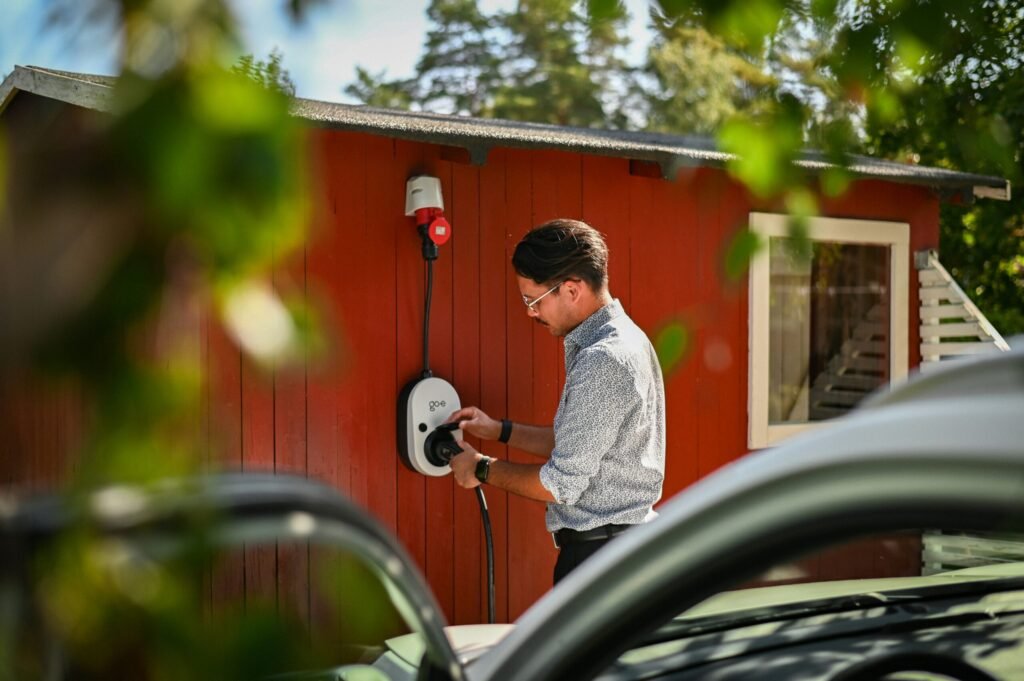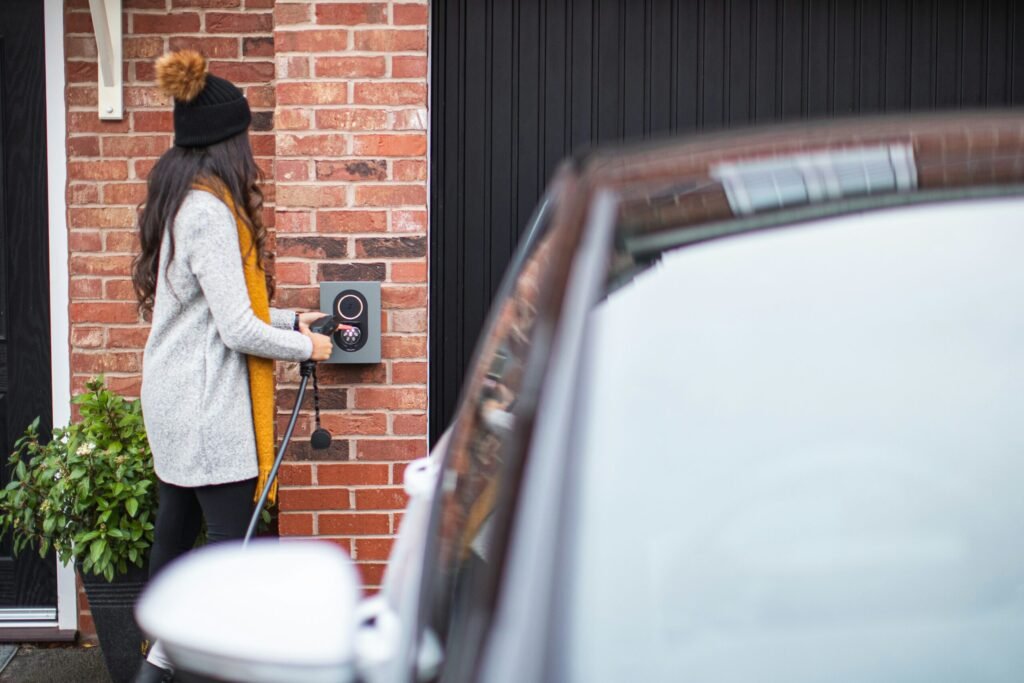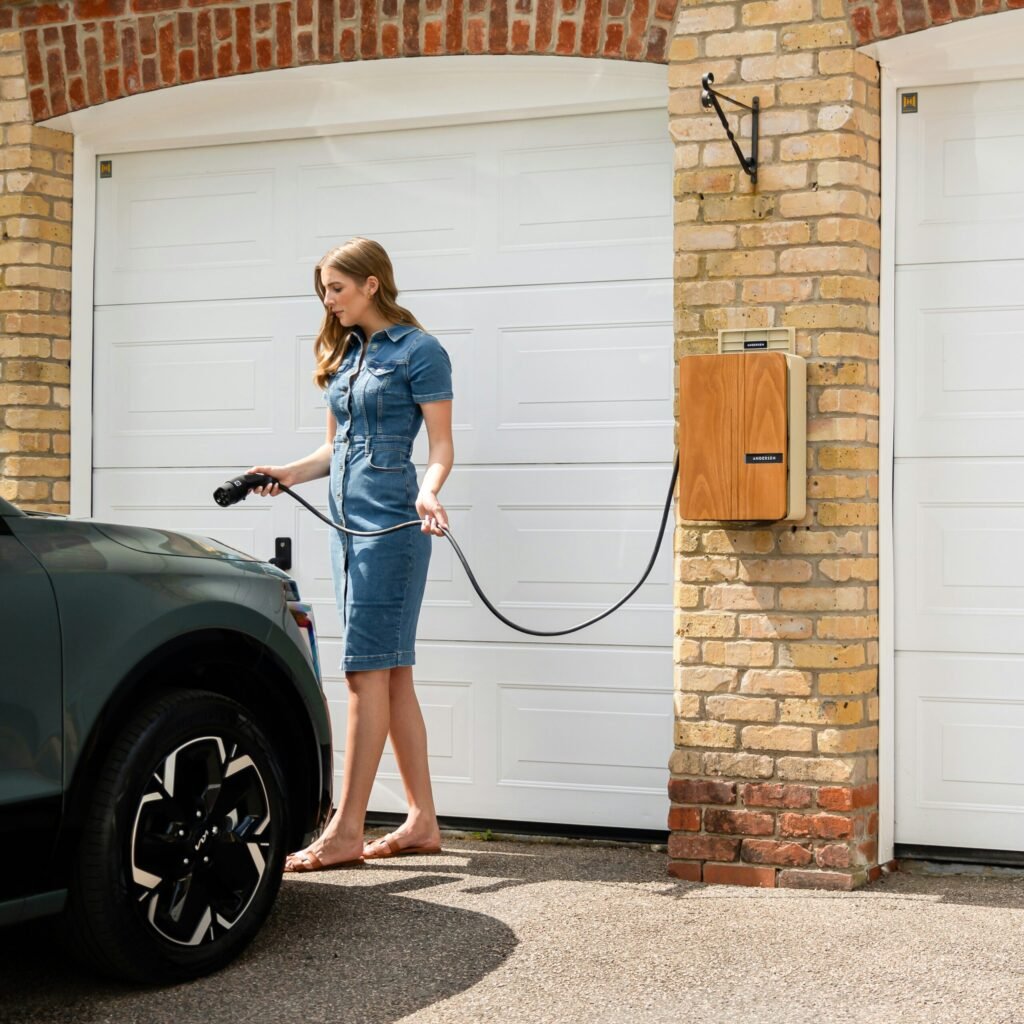As electric vehicles (EVs) continue to grow in popularity, the demand for convenient home charging options has surged. For those living in single-family homes, installing an EV charger is usually straightforward. But for condo dwellers, the situation is more complex. Enter the growing need for condo electric car charging—a topic at the heart of modern urban mobility and sustainability.

In this blog post, we’ll explore what condo EV charging involves, its benefits, the common challenges faced by residents and homeowner associations (HOAs), and the trends shaping the future of condo-friendly EV infrastructure. Whether you’re a condo owner, property manager, or board member, this guide is tailored to help you navigate the road to electrification.
What Is Condo Electric Car Charging?
Condo electric car charging refers to the installation and operation of electric vehicle charging stations within multi-unit residential buildings. These can include:
- Dedicated chargers in individual parking spots
- Shared stations in visitor or communal parking areas
- Networked systems managed by third-party providers
Because condominiums are governed by associations or boards, and infrastructure is shared, installing EV chargers often requires coordination, permissions, and sometimes significant planning.
Unlike public EV chargers found in parking lots or along highways, condo EV charging is part of private infrastructure. It often connects to the building’s electrical system, which can raise questions around billing, capacity, and legal rights.
Key Benefits of Condo Electric Car Charging

1. Convenience for Residents
Charging at home—especially overnight—is one of the top reasons people buy electric vehicles. Having access to EV chargers in a condo complex eliminates the need for frequent visits to public stations and ensures a fully charged vehicle every morning.
2. Increased Property Value
Properties with EV-ready parking spots or charging stations tend to attract more buyers and renters. As EV adoption rises, having on-site charging is no longer a luxury—it’s becoming an expected amenity.
3. Sustainability and Green Certifications
Condo buildings with electric car charging infrastructure are better positioned to earn green building certifications, such as LEED or ENERGY STAR. These certifications not only benefit the environment but can enhance the reputation of the condo and reduce insurance premiums.
4. Shared System Efficiencies
Many condos use load-sharing technologies that allow multiple EVs to charge from the same circuit without overloading the system. This improves energy efficiency and reduces installation costs.
Challenges and Limitations

1. Approval From Condo Boards or HOAs
One of the most significant hurdles to condo electric car charging is getting approval from the governing body. Some boards are hesitant due to perceived cost, legal liability, or lack of familiarity with EV technology.
2. Electrical Infrastructure Limitations
Older condo buildings may not have the electrical capacity to support multiple EV chargers. Upgrades can be expensive and may involve coordination with utility companies or electricians.
3. Cost and Ownership Models
Who pays for the installation? How is electricity billed—individually or shared? These questions must be addressed early. In some cases, residents are responsible for the cost of dedicated chargers; in others, the HOA may fund shared infrastructure.
4. Parking Assignment and Access Issues
Not all condos have deeded or reserved parking, and not all parking spots are near electrical panels. Residents without designated spots may have difficulty getting consistent access to a charging station.
5. Insurance and Liability Concerns
Installing chargers in shared spaces may require changes to insurance policies to cover fire risk, vandalism, or damage to the equipment.
Real-World Examples and Case Studies

Toronto, Canada – Retrofits in Older Buildings
A 1970s-era condo building in downtown Toronto successfully installed 12 EV chargers after a vote by the condo board. The project included a full panel upgrade, trenching in the garage, and a load-balancing system. The result? Increased resale value and high resident satisfaction.
Los Angeles, California – Shared Charging Model
A luxury condo in LA partnered with a third-party charging provider to install a shared bank of networked EV stations. Residents use an app to reserve time slots and are billed individually. The system is maintained by the provider, relieving the HOA of ongoing responsibilities.
Miami, Florida – New Development EV-Ready Design
A newly constructed condo included pre-wired infrastructure in every parking space. As a result, residents only needed to install the charger itself. This future-proofing move made the property highly attractive to eco-conscious buyers.
These cases show that with the right planning, condo electric car charging is not only possible—it’s a smart investment.
Future Trends and Predictions

1. Mandates and Legal Requirements
More cities and states are introducing legislation requiring new condo developments to be EV-ready. Some jurisdictions also mandate that condo boards cannot unreasonably deny a resident’s request to install a charger.
2. Advanced Load Management
New technologies enable dynamic load management, which balances electricity distribution among chargers in real-time. This allows older buildings to host more chargers without upgrading the main panel.
3. App-Based Payment and Access
Software platforms are simplifying EV charger access, enabling remote monitoring, payment, and even automated maintenance notifications. This makes shared charging more practical and user-friendly.
4. Government Incentives and Rebates
Various federal, state, and municipal programs offer grants or tax credits for installing EV infrastructure in condos. Staying informed about these can significantly lower installation costs.
To learn more about EV policies, check out the Electric vehicle article on Wikipedia.
Frequently Asked Questions
Can I install an EV charger in my condo parking spot?
Yes, but you typically need approval from your condo board or HOA. Some regions have “Right to Charge” laws that prevent unreasonable denials.
Who pays for the electricity used?
That depends on the setup. In individual installations, the charger is often metered separately. Shared stations usually bill users through an app or utility submeter.
How much does it cost to install a condo EV charger?
Costs vary widely. Individual units can range from $1,000 to $3,000, while full building retrofits can exceed $100,000. Rebates may offset these costs.
Can older buildings support EV chargers?
Yes, but they may require electrical upgrades, such as adding new panels or circuits. Load-sharing technology can help minimize these costs.
Are there incentives for condo EV charging?
Many regions offer rebates, tax credits, or grants for EV infrastructure in multi-unit buildings. Check with local energy agencies or utility providers.
Conclusion
The shift to electric vehicles is accelerating—and condo communities need to keep up. While condo electric car charging presents unique challenges, it also offers tremendous benefits, including increased property value, resident satisfaction, and long-term sustainability.
From obtaining board approval to selecting the right equipment and leveraging incentives, the path forward requires planning, communication, and commitment. But as demand grows, so does the accessibility of practical and affordable solutions.






